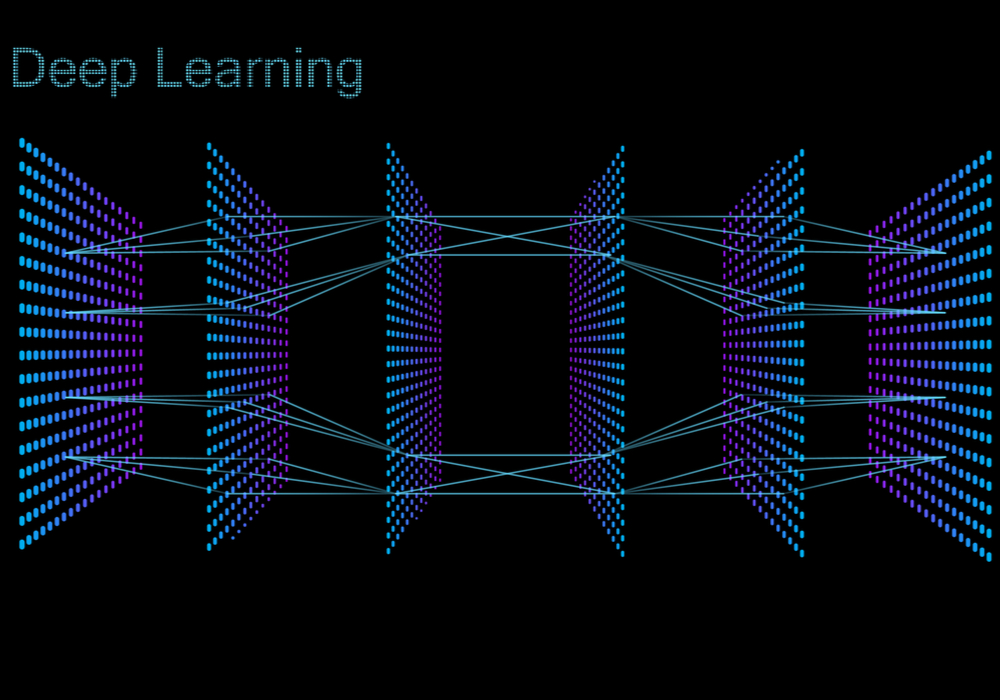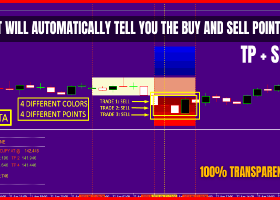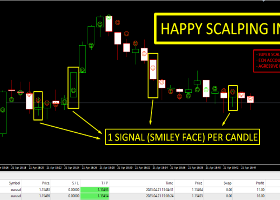
How to Build an Artificial Intelligence Module for MetaTrader 5 Advisors Using ChatGPT-like Forecasting Techniques
How to Build an Artificial Intelligence Module for MetaTrader 5 Advisors Using ChatGPT-like Forecasting Techniques
Integrating artificial intelligence (AI) into the MetaTrader 5 (MT5) trading platform has become increasingly popular as traders seek more advanced, data-driven strategies. Building an AI module for MT5 that works on the principle of ChatGPT—generating predictions based on historical data—requires both an understanding of financial markets and knowledge of AI and machine learning techniques. In this article, we will walk through the process of creating an AI-powered module for an MT5 expert advisor (EA) that forecasts market movements and executes trades based on those predictions
Key Concepts and Prerequisites
Before diving into development, it’s essential to understand several key concepts:
- MetaTrader 5 MT5): A trading platform that supports algorithmic trading, allowing users to automate strategies through Expert Advisors (EAs). The MT5 platform uses its proprietary programming language, MQL5.
- Artificial Intelligence (AI) and Machine Learning (ML): AI is used to simulate human decision-making, and machine learning allows the system to "learn" from historical data and improve over time. The AI we’ll be discussing uses **deep learning** models like ChatGPT, which predict outputs based on patterns in data.
- Python and MQL5 Integration: While MQL5 is powerful, its machine learning capabilities are limited. For advanced AI tasks like the one we’re building, integrating MQL5 with Python is essential. Python has powerful machine learning libraries such as TensorFlow, PyTorch, and scikit-learn, which are ideal for building AI models.

AI Golden Jet Fighter GTX EXPERT
>>>>>>> MT5 https://www.mql5.com/en/market/product/125004
>>>>>>> MT4 https://www.mql5.com/en/market/product/125971
Contact Author >>>>> https://www.mql5.com/en/users/skvirtand96
Follow news on Telegram >>>>>> https://t.me/forexImperiumX
Step-by-Step Guide
--- Step 1 ---
Set Up MetaTrader 5 and MQL5 Development Environment
First, make sure you have MetaTrader 5 installed and access to the MetaEditor IDE, where you'll write MQL5 code for your EA. The goal is to build an AI module that integrates Python's machine learning capabilities into the EA code.
1. Install MetaTrader 5: If you haven't already, download and install MetaTrader 5 from the official [MetaTrader website]
2. Familiarize Yourself with MQL5: You’ll need to write MQL5 code to handle trade logic, data fetching, and EA integration. The official [MQL5 documentation](https://www.mql5.com/en/docs) is a great resource.
--- Step 2 ---
Integrate MQL5 with Python

Since MT5’s native environment is not ideal for building deep learning models, we need to integrate it with Python.
1. Install Python: Download and install Python from the [official website](https://www.python.org/downloads/). Make sure you install a version compatible with MetaTrader 5 (Python 3.6+ is typically required).
2. MetaTrader 5 Python API: Install the **MetaTrader5** Python package, which allows you to interact with MT5 from Python. You can install it via pip:
pip install MetaTrader5
The documentation for the MetaTrader5 Python package can be found [here](https://pypi.org/project/MetaTrader5/).
3. Writing Python Scripts for MT5: You’ll write Python scripts to handle the AI logic (data fetching, training models, making predictions). Your EA in MQL5 will trigger these Python scripts to execute the AI model and return predictions.
--- Step 3 ---
Collect and Preprocess Market Data
For the AI model to make accurate predictions, it needs a robust dataset.
1. Historical Market Data: Fetch historical market data such as price, volume, indicators (e.g., RSI, MACD), and other financial metrics. In MT5, you can use the `CopyRates` function in MQL5 to pull this data. Example:
MqlRates rates[];
int copied = CopyRates(Symbol(), PERIOD_H1, 0, 1000, rates);
2. Preprocess the Data: Clean and normalize the data in Python. For instance, you can use the **Pandas** library to format the data for machine learning. Ensure you remove anomalies and scale the features for consistency:
import pandas as pd
from sklearn.preprocessing import MinMaxScaler
# Convert MT5 data to Pandas DataFrame
df = pd.DataFrame(data)
# Normalize the data
scaler = MinMaxScaler()
scaled_data = scaler.fit_transform(df)
--- Step 4 ---


Build and Train the AI Model
Now that we have the data, it’s time to build the AI model, which will function similarly to ChatGPT by predicting market movements based on historical data.
1. Choose a Model Type: For market prediction, models like Long Short-Term Memory (LSTM) networks or Recurrent Neural Networks (RNNs) work well. These models are capable of capturing time-based dependencies in financial data.
2. Create the Model in Python: You can use TensorFlow or PyTorch to create your LSTM model. Here’s an example using TensorFlow:
from tensorflow.keras.models import Sequential
from tensorflow.keras.layers import LSTM, Dense
model = Sequential()
model.add(LSTM(50, return_sequences=True, input_shape=(X_train.shape[1], X_train.shape[2])))
model.add(LSTM(50, return_sequences=False))
model.add(Dense(25))
model.add(Dense(1)) # Output layer for prediction
model.compile(optimizer='adam', loss='mean_squared_error')
model.fit(X_train, y_train, batch_size=64, epochs=10)
3. Train the Model: After the model is defined, train it on your preprocessed historical market data. Once trained, the model will learn to predict future market movements based on patterns.

--- Step 5 ---
Integrate the AI Model into MetaTrader 5
Now, you need to link the Python-based AI model to your MetaTrader 5 trading system.
1. MQL5-Python Integration: You can use the ShellExecute or PythonFunctionCall commands to run the Python script from within your MQL5 EA. The Python script will make predictions, which the EA can then use to execute trades.
int handle = ShellExecute("python", "path_to_your_script.py");
2. Get AI Predictions in MQL5: The Python script will output predictions (e.g., buy/sell signals), which the EA reads and acts on. For example, based on the prediction, the EA can place buy/sell orders:
if (ai_prediction == "BUY") {
OrderSend(Symbol(), OP_BUY, lot_size, Ask, slippage, stop_loss, take_profit);
}
--- Step 6 ---
Test and Optimize the AI Trading Advisor
1. Backtesting: Before deploying your AI module, use MetaTrader 5’s built-in strategy tester to backtest your EA with the AI module. This will allow you to fine-tune the system based on historical data performance.
2. Forward Testing: After successful backtesting, apply the EA to a demo account to see how it performs in live market conditions.
3. Optimize and Adjust: Continuously monitor the performance of your AI model and EA. If necessary, retrain the model with updated data or adjust its hyperparameters to improve performance.

--- Conclusion ---
Building an AI-powered module for MetaTrader 5 based on the principles of ChatGPT involves integrating MQL5 with Python, collecting and preprocessing market data, and developing a machine learning model capable of predicting market trends. While this is a simplified guide, it provides a foundational approach to creating an advanced AI trading advisor that can forecast market movements with high accuracy.
With the use of modern tools like LSTMs, TensorFlow, and MetaTrader’s Python API, you can create an intelligent trading system that continuously learns and adapts to the ever-changing market conditions.
>>>>> ----- AI Golden Jet Fighter GTX EXPERT ----- <<<<<<
Contact Author >>>>> https://www.mql5.com/en/users/skvirtand96
Follow news on Telegram >>>>>> https://t.me/forexImperiumX
For more information on MQL5 programming, visit the [MQL5 Documentation](https://www.mql5.com/en/docs).
For machine learning in Python, check out the official [TensorFlow](https://www.tensorflow.org/) and [PyTorch](https://pytorch.org/) documentation.


